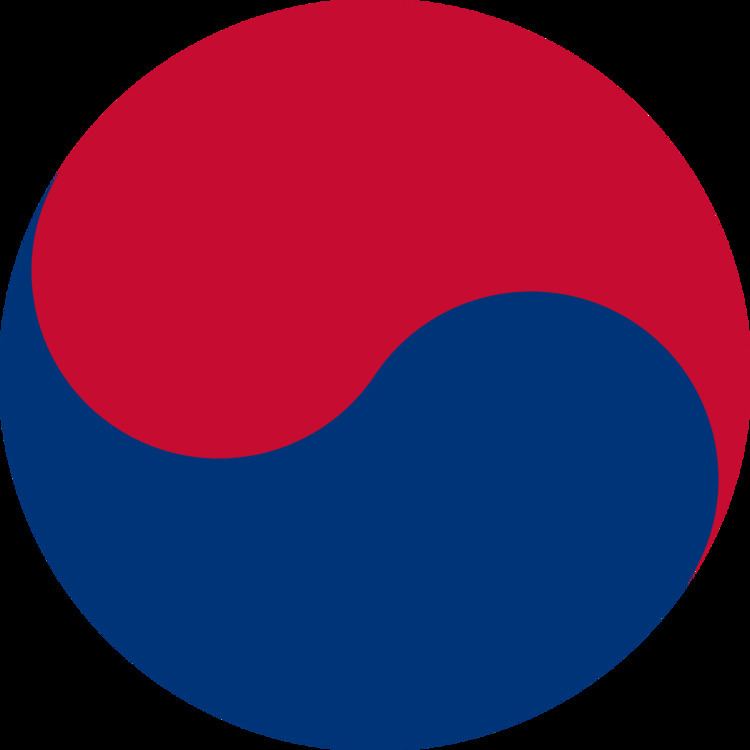 | ||
Taegek Sa Jang (also romanized as Taegeuk Sah Jang) is the fourth of eight taekwondo forms practiced by the Kukkiwon and the World Taekwondo Federation. A form, or poomsae (also romanized as pumsae or poomse), is a choreographed pattern of defense-and-attack motions. Taegeuk Sa Jang is often (but not universally) practiced by students of Kukkiwon/WTF-style taekwondo with rank of 5th geup. Fifth geup students of Kukkiwon/WTF-style taekwondo practice this form in order to advance to the next rank (4th geup).
Contents
Etymology
The word taegeuk (Hangul: 태극; Hanja: 太極, Korean pronunciation: [tʰɛgɯk̚]) refers to the universe from which all things and values are derived. It is also the symbol that makes up the center of the flag of South Korea and the source for its name, taegeukgi (hangul: 태극기, where gi means "flag"). The taegeuk is commonly associated with Korean Taoism philosophical values as well as Korean shamanism.
The word sa is the number 4 in the Sino-Korean numbering system. The word jang translates roughly as "chapter" or "part". Taegeuk Sa Jang translates as "Part 4 of the Taegeuk".
Symbolism
The floor pattern (or yeon-mu) of each taegeuk poomsae is three parallel lines. On each line, a 180 degree turn is performed.
The floor pattern of each taegeuk poomsae then represents three broken or solid lines, called trigrams or gwae (bagua in Chinese). Each trigram (gwae) corresponds to a natural element.
The first turn of Taegeuk Sa Jang is performed by moving the lead foot. The final two turns are performed by pivoting in-place. This indicates that the associated trigram is a solid line, a broken line, and a broken line; this is the trigram for thunder ("jin"). The Kukkiwon teaches that this poomsae should be performed with majesty, like a thunderstorm. This is the first poomsae in the Taegeuk series in which the practitioner transitions from the first line directly to the third line via a continuous sequence of movements, further symbolizing the long-reach of a thunderstorm.
Techniques
As a poomsae of intermediate difficulty, this form introduces the student to a number of new techniques:
Development
During the 1920s and 1930s many of the pioneers of taekwondo studied karate or Chinese martial arts in which forms practice is seen as an essential element of the martial art. When these pioneers returned to Korea after the Japanese occupation, they incorporated forms practice into their teaching. During the 1960s there were several efforts among these pioneers to unify their styles of martial art and create a consolidated set of forms. In 1965 the Korea Taekwondo Association appointed a committee of representatives from six of the Nine Kwans to develop the forms for what is now called Kukkiwon- or WTF-style taekwondo. The committee consisted of:
In 1967, this committee introduced the Palgwae and Yudanja (Black Belt) forms (including a simpler version of Koryo). In 1971 two additional kwans joined the committee:
This expanded committee went on to develop the Taegeuk forms.
